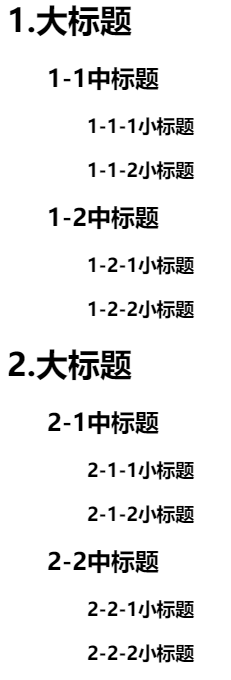Comments (17)
发现这道题和后面的题目有点类似,都是讲伪元素 :before 和 :after ,直接看这道题的解释吧,同样可以回答这个问题。
[css] 第19天 css的属性content有什么作用呢?有哪些场景可以用到?
针对这道题写了篇blog,原文链接:https://xiangshuo.blog.csdn.net/article/details/89843456
以下是回答。
认识 :before 和 :after
- 默认
display: inline; - 必须设置
content属性,否则一切都是无用功,content属性也只能应用在:before和:after伪元素上; - 默认user-select: none,就是
:before和:after的内容无法被用户选中; - 伪元素可以和伪类结合使用形如:
.target:hover:after。 :before和:after是在CSS2中提出来的,所以兼容IE8;::before和::after是CSS3中的写法,为了将伪类和伪元素区分开;- CSS 中其他的伪元素有:
::before、::after、::first-letter、::first-line、::selection等; - 不可通过DOM使用,它只是纯粹的表象。在特殊情况下,从一个访问的角度来看,当前屏幕阅读不支持生成的内容。
content 定义用法
content 属性与 :before 及 :after 伪元素配合使用,在元素头或尾部来插入生成内容。
说明: 该属性用于定义元素之前或之后放置的生成内容。默认地,这往往是行内内容,不过该内容创建的盒子类型可以用属性 display 控制。
MDN 对 content 的取值描述:
content: normal /* Keywords that cannot be combined with other values */
content: none
content: 'prefix' /* <string> value, non-latin characters must be encoded e.g. \00A0 for */
content: url(http://www.example.com/test.html) /* <uri> value */
content: chapter_counter /* <counter> values */
content: attr(value string) /* attr() value linked to the HTML attribute value */
content: open-quote /* Language- and position-dependant keywords */
content: close-quote
content: no-open-quote
content: no-close-quote
content: open-quote chapter_counter /* Except for normal and none, several values can be used simultaneously */
content: inheritcontent: <string> value 字符串
可以加入任何字符,包括 Unicode 编码等各种字符。
<a class="demo" href="https://www.xunlei.com/" title="精彩,一下就有">精彩,一下就有</a>
.demo:after{
content: "↗"
}
我们还可以通过 content 内字符串的变化,实现类似 加载中... 的动画效果
.demo:after{
animation: dot 1.6s linear both;
}
@keyframe dot{
0%{ content: "." }
33%{ content: ".." }
66%{ content: "..." }
100%{ content: "." }
}<a class="demo" href="https://www.xunlei.com/" title="精彩,一下就有">精彩,一下就有<dot>...</dot></a>dot {
display: inline-block;
height: 1em;
line-height: 1;
text-align: left;
vertical-align: -.25em;
overflow: hidden;
}
dot::before {
display: block;
content: '...\A..\A.';
white-space: pre-wrap;
animation: dot2 1.6s infinite step-start both;
}
@keyframes dot2 {
33% {
transform: translateY(-2em);
}
66% {
transform: translateY(-1em);
}
}content: <uri> value 外部资源
用于引用媒体文件,图片,图标,SVG等。
.demo:after{
content: url(https://img-vip-ssl.a.88cdn.com/img/xunleiadmin/5b9889e14dcdc.png);
}
受 background-image: url() 可以用渐变实现背景启发,类似的,一些函数是不是可以放在 content 中来实现?
.demo:after {
content: radial-gradient(circle at 35% 35%, white 10%, pink 70%);
display: inline-block;
border-radius: 50%;
width: 100px;
height: 100px;
overflow: hidden;
}
完美!当然本来就伪元素背景就可以实现,又为什么要放 content 呢?
content: attr() value 属性值的引用
调用当前元素的属性,可以方便的比如将图片的 Alt 提示文字或者链接的 Href 地址显示出来。
.demo:after{
content: attr(href);
}.demo:after{
content: attr(class);
}content: <counter> values
调用计数器,可以不使用列表元素实现序号功能。具体请参见 counter-increment 和 counter-reset 属性的用法。
<h1>大标题</h1>
<h2>中标题</h2>
<h3>小标题</h3>
<h3>小标题</h3>
<h2>中标题</h2>
<h3>小标题</h3>
<h3>小标题</h3>
<h1>大标题</h1>
<h2>中标题</h2>
<h3>小标题</h3>
<h3>小标题</h3>
<h2>中标题</h2>
<h3>小标题</h3>
<h3>小标题</h3>h1::before{
content:counter(h1)'.';
}
h1{
counter-increment:h1;
counter-reset:h2;
}
h2::before{
content:counter(h1) '-' counter(h2);
}
h2{
counter-increment:h2;
counter-reset:h3;
margin-left:40px;
}
h3::before{
content:counter(h1) '-' counter(h2) '-' counter(h3);
}
h3{
counter-increment:h3;
margin-left:80px;
}引用符号
属于引用符号的取值有 4 种,共 2 对,在 CSS 中用了语义较为清晰的关键词来表示: open-quote、 close-quote、no-open-quote、no-close-quote。
默认:
.demo::before {
content: open-quote;
}
.demo::after {
content: close-quote;
}.demo {
quotes: "『" "』";
}
.demo::before {
content: open-quote;
}
.demo::after {
content: close-quote;
}.demo {
quotes: "«" "»" "‹" "›";
}
.demo::before {
content: no-open-quote open-quote;
}
.demo::after {
content: close-quote;
}总结
以上我们主要了解了 content 的一些用法和巧用,当然 :before 和 :after 本身作为元素,也可以实现多种应用效果,比如:三角形(border)、装饰元素、阴影等。希望通过以上介绍,能让大家对 content 有更深入的了解,帮助我们在平时的布局和样式以及用户体验中发挥更大的价值。
Demo codepen 地址:https://codepen.io/xiangshuo1992/pen/zQGyBW
END.
from fe-interview.
- :表示伪类,是一种样式,比如:hover, :active等
- ::表示伪元素,是具体的内容,比如::before是在元素前面插入内容,::after则是在元素后面插入内容,不过需要content配合,并且插入的内容是inline的。
- :before和:after其实还是表示伪元素,在css3中已经修订为::before和::after了,只是为了能兼容IE浏览器,所以也可以表示成:before和:after
from fe-interview.
区别:
- 伪元素在css1中已经存在当时用单冒号,css3时做了修订用双冒号 ::before ::after表示伪元素用来区别伪类。
作用:
- 在元素前面(::before)和后面(::after)加内容
from fe-interview.
::是伪元素 ::after::before::first-letter:first-line
:是伪类 :active:hover🔗focus:visited
from fe-interview.
:: 和 : 是 CSS3 中为了区别伪类和伪元素所用的不同的写法。:: 表示伪元素,目前两种写法都被兼容。
::before,::after 可以在一个 DOM 元素的前面和后面增加一个伪元素。可以用来清除浮动、为元素增加特殊效果(如前面有特殊符号等)。
::before 和 ::after 默认添加的是 inlne 元素,通过 content 属性来设置展示的内容,并且必须要设置 content 属性。content 属性可以利用 attr 与元素的相关内容做联动。
详细设置和用法可以参考 css 伪元素:before 和:after 用法详解
from fe-interview.
: 伪类
:: 伪元素
双冒号是在当前规范中引入的,用于区分伪类和伪元素。不过浏览器需要同时支持旧的已经存在的伪元素写法。
from fe-interview.
::是css3为了区分伪类和伪元素新增的
::伪元素
:伪类
::before在元素内部的最开头添加元素或者content
::after与之相反,在元素内部的最结尾
from fe-interview.
:after伪类
::before伪元素
from fe-interview.
:表示伪类,是一种样式,比如:hover, :active等
::表示伪元素,是具体的内容,比如::before是在元素前面插入内容,::after则是在元素后面插入内容,不过需要content配合,并且插入的内容是inline的。
:before和:after其实还是表示伪元素,在css3中已经修订为::before和::after了,只是为了能兼容IE浏览器,所以也可以表示成:before和:after
from fe-interview.
回答第一个,第二个大家知道了,单冒号和双冒号主要区别恐怕是兼容性问题吧,前者也就是单冒号是css3出来的,肯定是不兼容IE9以下,后者兼容。
from fe-interview.
单冒号:伪元素
双冒号::伪类
:after在后面加东西
:before在前面加东西
from fe-interview.
区别
-
单冒号 : 表示伪类,伪类是选择器的一种,它用于选择处于特定状态的元素
-
双冒号 :: 表示伪元素,伪元素以类似方式表现,不过表现得是像你往标记文本中加入全新的HTML元素一样,而不是向现有的元素上应用类
-
起初在
CSS2.1里,:before和:after表示伪元素后来在
CSS3的规范里,伪元素的语法被修改成使用双冒号,成为::before ::after现代的浏览器为了保持后向兼容,支持早期的带有单双冒号语法的伪元素
伪元素作用
-
::after/::before用来创建一个伪元素`,作为已选中元素的 最后一个子元素 / 第一个子元素通常会配合
content属性来为该元素添加装饰内容此元素默认为行内元素
-
通过对它们进行任何的CSS样式设置,例如,改变它们的前景颜色,增加背景色/图,调整字体大小,调整对齐方式等
来装饰内容 (无论是装饰图片还是音效) 而不需要更改 HTML 的内容,从而帮助内容与样式更好地分离
from fe-interview.
:before,:after是在CSS2中提出的,所以兼容IE8,::before,::after是在CSS3中的写法,为了将伪类和伪元素区分开。这两个伪类特有属性content,用于在CSS渲染中向元素逻辑上的头部或尾部添加内容。
from fe-interview.
: 伪类,::伪元素
::before在前面插入
::after 在后面插入
from fe-interview.
伪类和伪元素,原本都是单冒号的,css3为了区别将伪元素用双冒号,作用其实都是差不多的,在元素前面或者后面插入内容,而不增加dom,写单冒号可以更好兼容,
from fe-interview.
双冒号是伪元素,单冒号是伪类,作用是是在元素的前面或者后面添加内容
from fe-interview.
-
单冒号 : 表示伪类,伪类是选择器的一种,它用于选择处于特定状态的元素
-
双冒号 :: 表示伪元素,伪元素以类似方式表现,不过表现得是像你往标记文本中加入全新的HTML元素一样,而不是向现有的元素上应用类
-
在元素前面(::before)和后面(::after)加内容
from fe-interview.
Related Issues (20)
- [angular] 第1803天 请说说在Angular中什么是服务和依赖注入(DI)?
- [angular] 第1804天 请说说路由和导航在Angular中如何工作的?
- [angular] 第1805天 请说说在Angular中如何实现表单验证?
- [angular] 第1806天 请说说观察者模式和RxJS在Angular中的应用
- [angular] 第1807天 请说说在Angular中的双向数据绑定是如何工作的?
- [angular] 第1808天 请说说在Angular中如何实现国际化(i18n)?
- [angular] 第1809天 如何在Angular中实现懒加载?
- [angular] 第1810天 如何在Angular中实现导航的控制和保护?
- [angular] 第1811天 请说说在Angular中什么是RxJS?
- [angular] 第1812天 请说说在Angular中的ngFor是什么?有哪些用途? HOT 1
- [angular] 第1813天 请说说在Angular中的路由器是什么?
- [angular] 第1814天 请说说在Angular中的ngSwitch是什么?有哪些用途?
- [angular] 第1815天 请说说在Angular中的组件是什么?
- [angular] 第1816天 请说说在Angular中什么是指令?有哪些类型的指令?
- [angular] 第1817天 请说说在Angular中的依赖注入是什么?
- [angular] 第1818天 请说说在Angular中的NgModule是什么?
- [angular] 第1819天 请说说在Angular中的可观察对象是什么?
- [angular] 第1820天 请说说在Angular中的路由器守卫是什么?它有哪些类型?
- [angular] 第1821天 请说说在Angular中的服务是什么?如何创建一个服务?
- [angular] 第1822天 请说说在Angular中的模板语法是什么?
Recommend Projects
-
 React
React
A declarative, efficient, and flexible JavaScript library for building user interfaces.
-
Vue.js
🖖 Vue.js is a progressive, incrementally-adoptable JavaScript framework for building UI on the web.
-
 Typescript
Typescript
TypeScript is a superset of JavaScript that compiles to clean JavaScript output.
-
TensorFlow
An Open Source Machine Learning Framework for Everyone
-
Django
The Web framework for perfectionists with deadlines.
-
Laravel
A PHP framework for web artisans
-
D3
Bring data to life with SVG, Canvas and HTML. 📊📈🎉
-
Recommend Topics
-
javascript
JavaScript (JS) is a lightweight interpreted programming language with first-class functions.
-
web
Some thing interesting about web. New door for the world.
-
server
A server is a program made to process requests and deliver data to clients.
-
Machine learning
Machine learning is a way of modeling and interpreting data that allows a piece of software to respond intelligently.
-
Visualization
Some thing interesting about visualization, use data art
-
Game
Some thing interesting about game, make everyone happy.
Recommend Org
-
Facebook
We are working to build community through open source technology. NB: members must have two-factor auth.
-
Microsoft
Open source projects and samples from Microsoft.
-
Google
Google ❤️ Open Source for everyone.
-
Alibaba
Alibaba Open Source for everyone
-
D3
Data-Driven Documents codes.
-
Tencent
China tencent open source team.











from fe-interview.